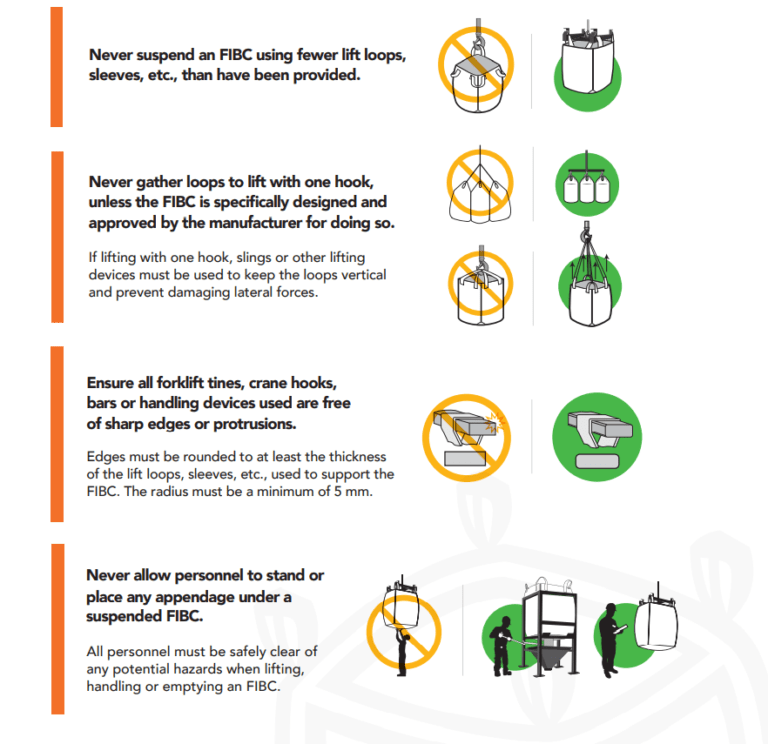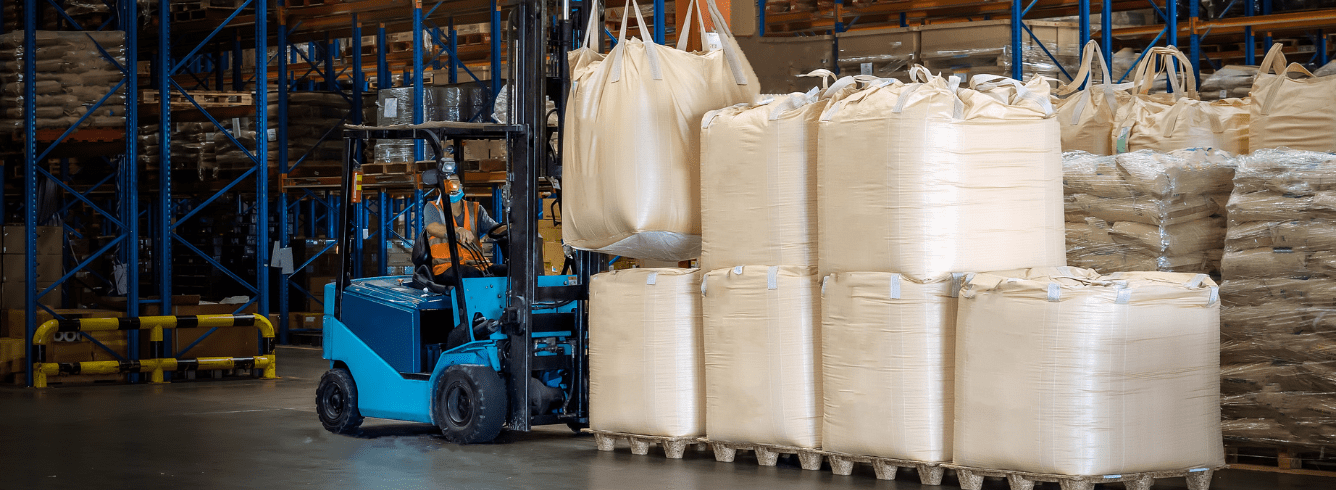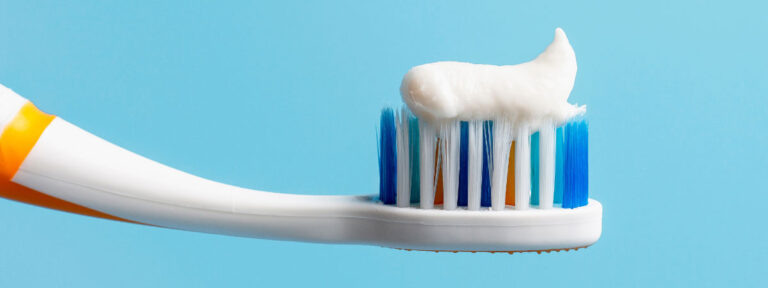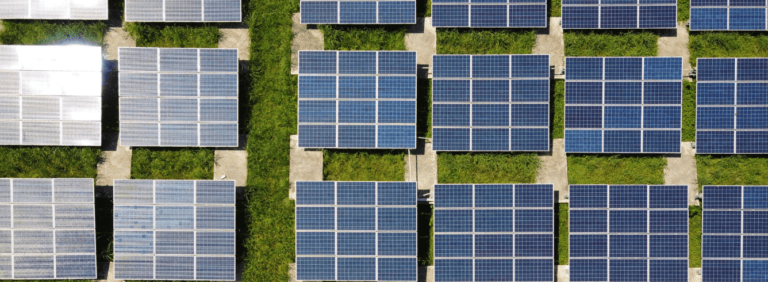When bag emptying, it is important to follow all safety protocols . Here are the best practices and guidance to use when doing this.
Bag emptying – small bags
Access
Restrict access to the work area to authorised personnel only.
Design and equipment
Ensure bag emptying equipment is fit for purpose.
Enclose the bag emptying equipment as much as possible and keep it under negative pressure by using a local exhaust ventilation system.
The hood’s exhaust volume requirement is a function of the open hood area, with experience showing that air velocities of 1 m/s (200 fpm) into the hood are adequate for DE dust capture.
For small bags, the use of automatic or semi-automatic bag dumping stations is recommended for emptying the bags.
Ensure workers tip the bag contents progressively – never dump them.
Provide a clean air supply to the workroom to replace extracted air.
Maintenance
Ensure equipment used in the task is maintained as advised by the supplier in efficient working order and in good repair.
Examination and testing
Visually check PPE daily for signs of damage. If used infrequently, then check it before each use.
Check effectiveness of respiratory protective equipment before use. Seek advice from the supplier on appropriate testing methods.
Keep records of inspections for a suitable period of time to comply with national laws (minimum five years).
Cleaning and housekeeping
Keep non-disposable items of PPE clean.
Employers may provide clean storage facilities for PPE. Protective clothes (overalls) should not be taken home.
Do not clean clothing using compressed air.
Use water or vacuum cleaner fitted with a HEPA filter to remove dusts and powders during cleaning.
Conduct maintenance and repair work only at facilities that are not in operation. Minor cleaning tasks may be conducted when facilities are operating, if it is safe to do so.
Bag emptying – bulk bags
Access
Restrict access to the work area to authorised personnel only.
Design and equipment
Ensure bag emptying equipment is fit for purpose.
Enclose the bag emptying equipment as much as possible and keep it under negative pressure by using a local exhaust ventilation system.
For single trip bulk bags without inner liner, use bag emptying equipment featuring pyramidal cutting knives and a rubber membrane to seal off the bag bottom. Manual bag cutting is not recommended without the use of personal protective equipment.
For multiple trip bulk bags, a discharge system with vibrator plate may be used and this could be equipped with local exhaust ventilation.
In order to dispose of empty bags without creating dust, do not manually compress the empty bags. Instead, drop them into a large plastic sack supported and held open by a metal frame. When it is full, seal the sack and dispose of it in a suitable waste skip. DO NOT let the waste sack overflow.
Bag emptying equipment may be connected to a suitable dust arrestment system (e.g. bag filter/cyclone) and may be easy to access for maintenance, unblocking and cleaning.
Where possible keep bag emptying equipment away from doors, windows and walkways to prevent draughts affecting the performance of dust extraction systems.
Provide a clean air supply to the workroom to replace extracted air.
Maintenance
Ensure equipment used in the task is maintained, as advised by the supplier/installer, in efficient working order and in good repair.
Replace consumables (filters etc.) in accordance with the manufacturer’s recommendations.
Examination and testing
Visually check PPE daily for signs of damage. If used infrequently, then check it before each use.
Check effectiveness of dust suppression and/or extraction equipment before use. Seek advice from the supplier and keep relevant records to compare in future tests.
Keep records of inspections for a suitable period of time to comply with national laws (minimum five years).
Cleaning and housekeeping
Clean your workplace on a regular basis and clean spills immediately. Do not clean up with a dry brush or using compressed air.
Use water or vacuum cleaner fitted with a HEPA filter to remove dusts and powders during cleaning.
Carry out maintenance and repair work only at facilities that are not in operation. Minor cleaning tasks may be conducted when facilities are operating, if it is safe to do so.

For the safe handling of titanium tetrachloride (TiCl4), go to the dedicated section.





